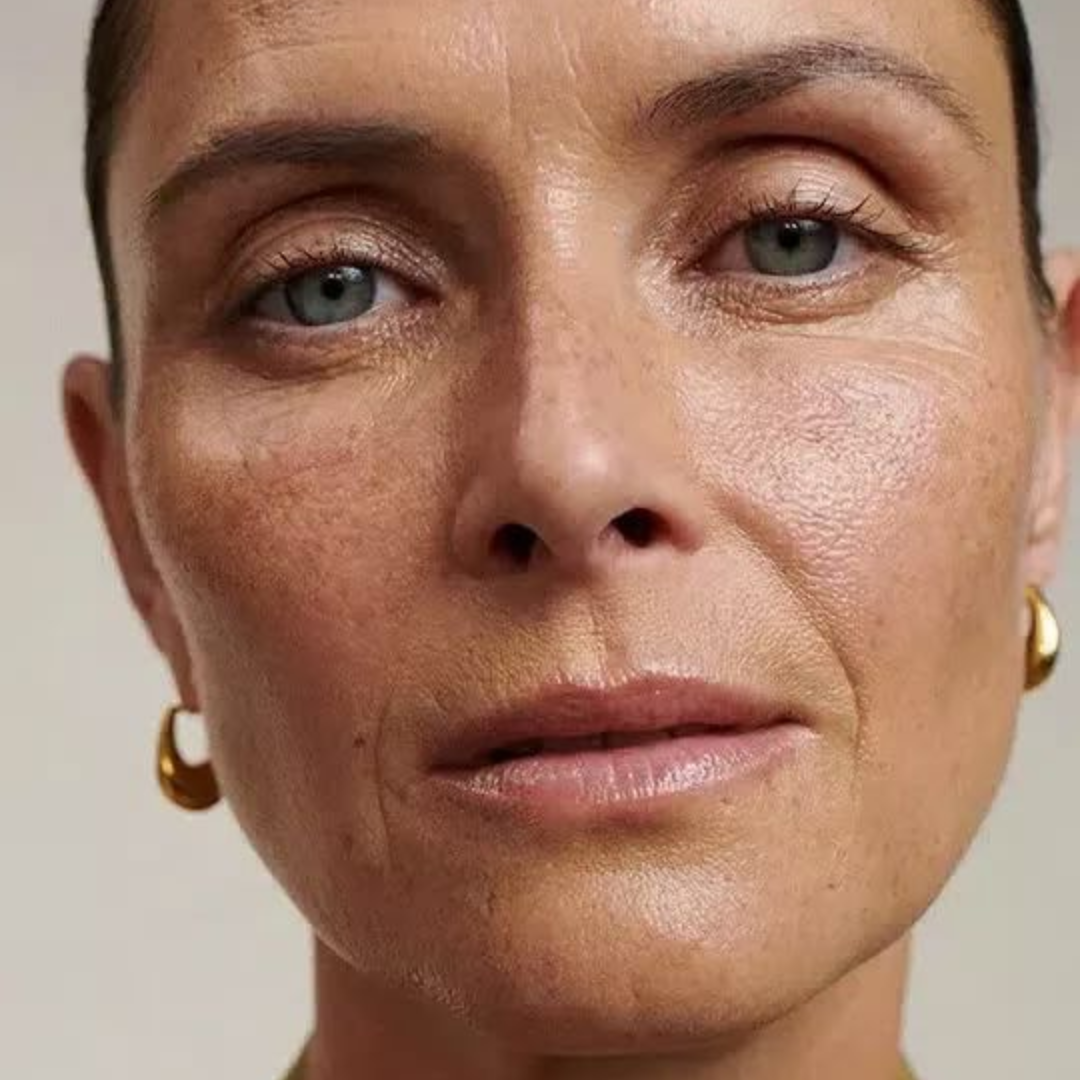
What are the most common wrinkles and how can they be corrected?
Share
Wrinkles are part of the natural aging process. However, they do not all appear in the same way. A distinction is made between dynamic wrinkles, caused by repetitive facial movements, and static wrinkles, which appear as a result of the skin's loss of collagen and elasticity. Understanding these different forms of wrinkles enables us to adopt the best strategies for attenuating them and slowing their appearance.
The different types of wrinkle
1. Forehead wrinkles
Forehead wrinkles are horizontal lines that cross the skin above the eyebrows. They first appear when we frown or express emotion, then gradually become permanent with age. This phenomenon is amplified by collagen and elastin depletion, prolonged sun exposure and insufficient skin hydration.
Injections of botulinum toxin (Botox®) to relax the forehead muscles, skin care products enriched with peptides and collagen to firm the skin, and daily sun protection to prevent worsening can all help.
2. Frown lines (frown lines)
These vertical wrinkles between the eyebrows can give a worried or stern appearance. They result from repeated contraction of the forehead muscles, and are exacerbated by stress and fatigue.
Botox injections help limit these contractions and soften the skin. Regular exfoliation and the use of retinol-based skin care products also help improve cell renewal and smooth out these marks of time.
3. Crow's feet wrinkles
The fine lines that appear at the outer corners of the eyes are often associated with smiles and facial expressions. They are caused by repeated movements, the natural thinness of the skin in this area and a lack of hydration.
To attenuate them, we recommend using eye contour creams enriched with hyaluronic acid and retinol, regularly applying specific moisturizing masks and wearing sunglasses to protect this fragile area from external aggression.

4. Nasolabial folds (smile lines)
Nasolabial folds, which run from the sides of the nose to the corners of the mouth, deepen with age due to loss of facial volume and sagging skin. The effect of gravity exacerbates this situation.
To correct them, hyaluronic acid injections restore lost volume, while treatments such as radiofrequency and ultrasound stimulate collagen production. Facial gymnastics, by strengthening the muscles of the lower face, can also help limit their appearance.
5. Puppet wrinkles
These wrinkles, which extend from the corners of the lips to the chin, sometimes give a sad or discontented look. They are mainly due to progressive skin slackening and the depletion of natural collagen reserves.
To restore volume and smooth this area, hyaluronic acid injections are effective. Techniques such as radiofrequency lifting can also firm the skin. Finally, regular facial massage stimulates microcirculation and promotes skin elasticity.
6. Neck and décolleté wrinkles
The skin of the neck and décolleté is particularly thin and fragile, making it more prone to horizontal and vertical wrinkles. Prolonged exposure to the sun, lack of hydration and reduced collagen production accentuate this phenomenon. To prevent and attenuate these wrinkles, we recommend thedaily application of moisturizing and firming treatments based on vitamin C and hyaluronic acid. Laser and radiofrequency treatments can also stimulate cell regeneration, while rigorous sun protection helps limit photoaging.

Factors favoring the appearance of wrinkles
The appearance of wrinkles is influenced by many factors, both internal and external.
- As we age, collagen and elastin production naturally slows down, making skin thinner and less firm.
- Exposure to UV rays is another major factor, as it degrades collagen fibers and accelerates skin aging.
- Dehydration also makes skin more vulnerable, while free radicals generated by pollution, smoking, stress and an unbalanced diet accelerate the oxidation of skin cells.
- In addition, repeated facial expressions strain certain facial muscles, leading to the appearance of expression lines.
- Finally, glycation, a phenomenon linked to excess sugar in the diet, stiffens collagen fibers and accelerates their degradation.
How to prevent and correct wrinkles?
To prevent and correct wrinkles, it's essential to adopt an appropriate skincare routine.
The daily application of sun protection helps protect the skin from external aggressors, while the use of skin care products enriched with retinol, hyaluronic acid and antioxidants stimulates cell renewal and maintains good hydration.
In addition, consulting a dermatologist or aesthetic specialist provides personalized advice and access to advanced treatments such as chemical peels, lasers or microneedling, which revitalize the skin in depth.
Last but not least, a healthy lifestyle is essential: drinking enough water, eating a diet rich in antioxidants and avoiding harmful substances such as tobacco and alcohol all help preserve the skin's youthful vitality.
Conclusion
Wrinkles are an inevitable part of skin aging, but there are many ways to prevent and reduce them. A holistic approach combining skin care, beauty treatments and a healthy lifestyle can help slow the appearance of wrinkles and keep skin looking younger and more radiant. By incorporating these best practices today, you can preserve your skin's youthfulness and firmness for longer.
Sources
1 Varani, James, Michael K. Dame, Laure Rittie, Suzanne E.G. Fligiel, Sewon Kang, Gary J. Fisher, and John J. Voorhees." Decreased Collagen Production in Chronologically Aged Skin." The American Journal of Pathology 168, no. 6 (June 2006): 1861-68. https://doi.org/10.2353/ajpath.2006.051302.
2 Sebbar, El-Houcine, Imane Naji, Imane El Mezgueldi, and Mohammed Choukri. "Oxidative stress, a cellular aggression". Actualités Pharmaceutiques 62, no. 626 (May 1, 2023): 36-37. https://doi.org/10.1016/j.actpha.2023.03.016.
3 Oresajo, Christian, Sreekumar Pillai, Megan Manco, Margarita Yatskayer, and David McDaniel. "Antioxidants and the Skin: Understanding Formulation and Efficacy". Dermatologic Therapy 25, no. 3 (2012): 252-59. https://doi.org/10.1111/j.1529-8019.2012.01505.x.
4 Reynolds, J. J. "Collagenases and Tissue Inhibitors of Metalloproteinases: A Functional Balance in Tissue Degradation". Oral Diseases 2, no. 1 (March 1996): 70-76. https://doi.org/10.1111/j.1601-0825.1996.tb00206.x.
